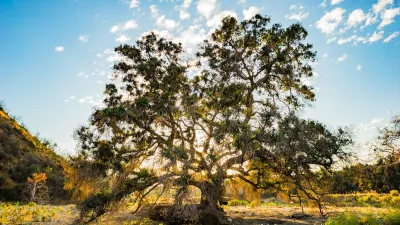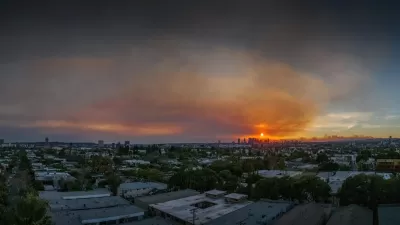L.A. must balance fire resilience with ecological preservation by gradually replacing flammable non-native plants like eucalyptus and palm trees with native and fire-resistant species while rethinking urban landscapes and land management practices.

Southern California's fire-prone environment raises questions about the role of flammable non-native plants, like eucalyptus and palm trees, in spreading wildfires. While these trees are iconic symbols of Los Angeles, they are also highly combustible and can exacerbate fire risks, especially when poorly maintained. Experts suggest a gradual transition toward native and less flammable species, such as coast live oaks and California lilacs, to create fire-resilient landscapes. However, even native plants are not entirely fireproof, as many naturally burn and regenerate, requiring careful planning to balance fire safety with ecological preservation.
This editorial emphasizes the importance of thoughtful vegetation management and land use planning to minimize fire hazards. Native plants, besides being less flammable in some cases, provide critical habitat for wildlife and promote biodiversity. Some desirable non-native species, like fruit trees, can also contribute to fire resilience in urban areas. Experts recommend planting non-native but fire-resistant species in urban cores and parks while avoiding invasive plants like fountain grass and mustard, which thrive in dry conditions and exacerbate fire spread.
As wildfires become more frequent and intense due to climate change, Los Angeles must adopt long-term strategies for sustainable rebuilding and land management. This involves creative urban planning, fire-hardened buildings, and vegetation management, supported by funding mechanisms for ongoing prevention efforts. The editorial calls for a collaborative and sustained approach to ensure that Los Angeles evolves into a safer, greener, and more resilient city, rather than simply replicating the conditions that contributed to its vulnerabilities.
FULL STORY: Editorial: After the fires, must we get rid of our flammable eucalyptus and palm trees? Maybe not

Planetizen Federal Action Tracker
A weekly monitor of how Trump’s orders and actions are impacting planners and planning in America.

San Francisco's School District Spent $105M To Build Affordable Housing for Teachers — And That's Just the Beginning
SFUSD joins a growing list of school districts using their land holdings to address housing affordability challenges faced by their own employees.

The Tiny, Adorable $7,000 Car Turning Japan Onto EVs
The single seat Mibot charges from a regular plug as quickly as an iPad, and is about half the price of an average EV.

Seattle's Plan for Adopting Driverless Cars
Equity, safety, accessibility and affordability are front of mind as the city prepares for robotaxis and other autonomous vehicles.

As Trump Phases Out FEMA, Is It Time to Flee the Floodplains?
With less federal funding available for disaster relief efforts, the need to relocate at-risk communities is more urgent than ever.

With Protected Lanes, 460% More People Commute by Bike
For those needing more ammo, more data proving what we already knew is here.
Urban Design for Planners 1: Software Tools
This six-course series explores essential urban design concepts using open source software and equips planners with the tools they need to participate fully in the urban design process.
Planning for Universal Design
Learn the tools for implementing Universal Design in planning regulations.
Smith Gee Studio
City of Charlotte
City of Camden Redevelopment Agency
City of Astoria
Transportation Research & Education Center (TREC) at Portland State University
US High Speed Rail Association
City of Camden Redevelopment Agency
Municipality of Princeton (NJ)





























